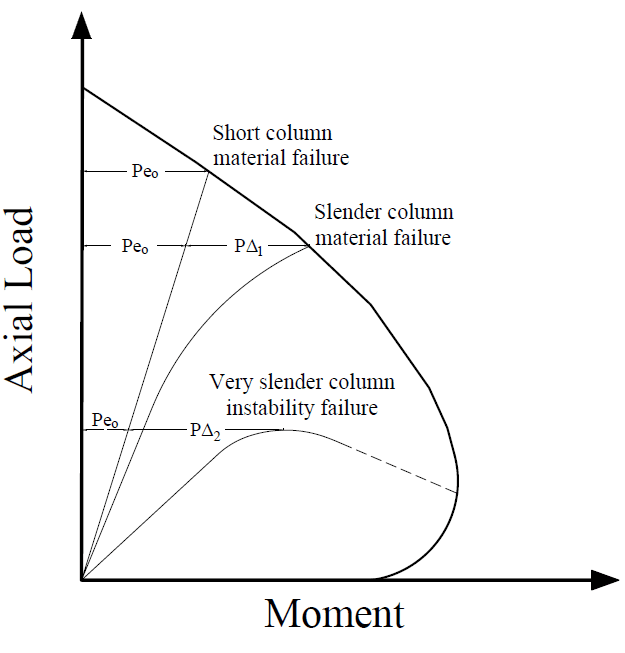jochav52802
Structural
Good Afternoon,
I'm working on a project in a high-seismic zone with cantilevered columns, and per ASCE 7-16, am required to keep the axial unity for seismic load combinations to 15% or below.
I'd appreciate any guidance on how what process I might follow to verify this.
Generally, it seems that 3D interaction diagrams are used to show where the applied moments sit relative to the available moment capacity at the applied axial load. Since this information is based on taking a slice through the 3D interaction diagram at a specific applied axial load, I'm not sure how to come up with an axial capacity given the applied moments in order to compute the axial utilization ratio.
Any insight is appreciated; it's been awhile since I've had to design a concrete column
Thank you!
I'm working on a project in a high-seismic zone with cantilevered columns, and per ASCE 7-16, am required to keep the axial unity for seismic load combinations to 15% or below.
I'd appreciate any guidance on how what process I might follow to verify this.
Generally, it seems that 3D interaction diagrams are used to show where the applied moments sit relative to the available moment capacity at the applied axial load. Since this information is based on taking a slice through the 3D interaction diagram at a specific applied axial load, I'm not sure how to come up with an axial capacity given the applied moments in order to compute the axial utilization ratio.
Any insight is appreciated; it's been awhile since I've had to design a concrete column
Thank you!

